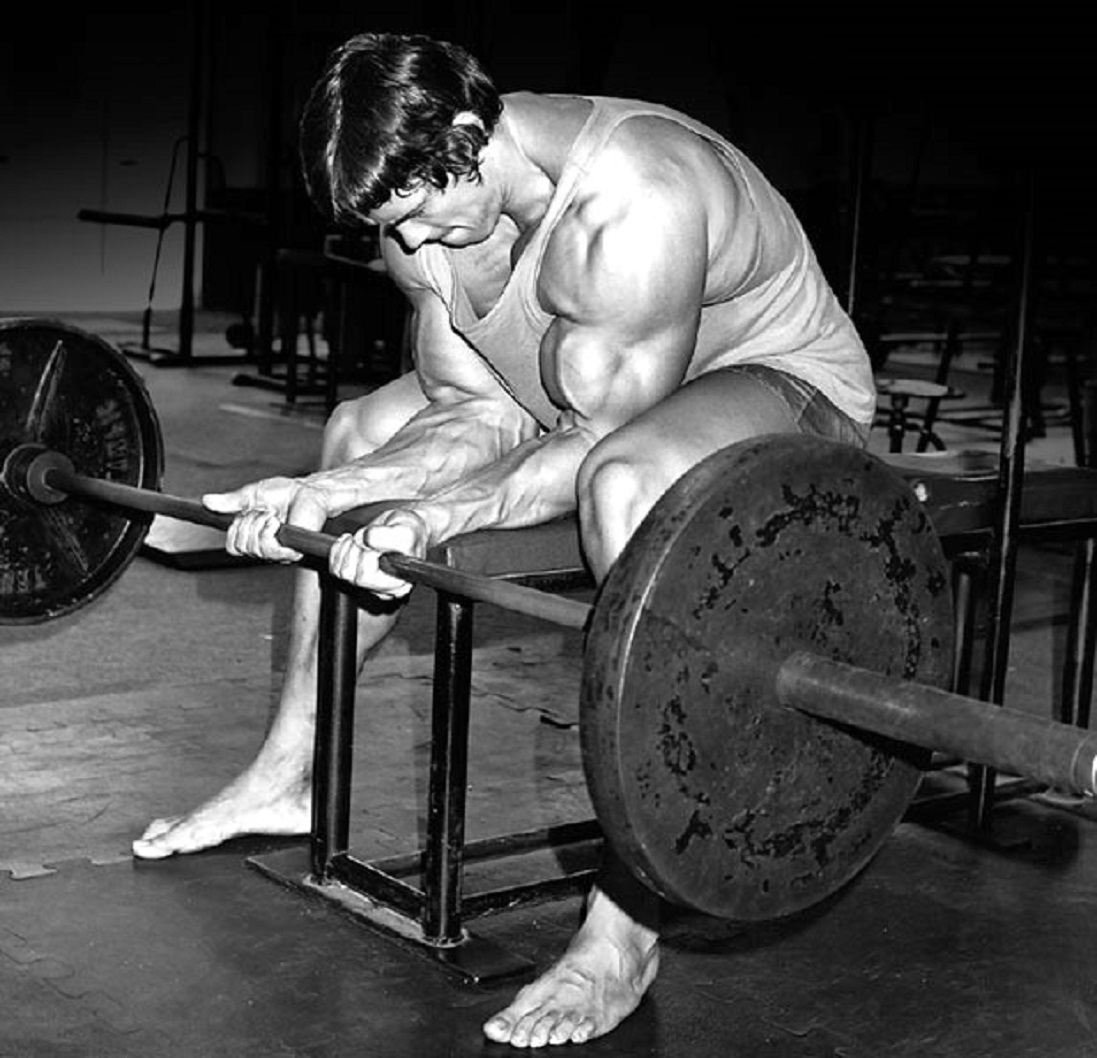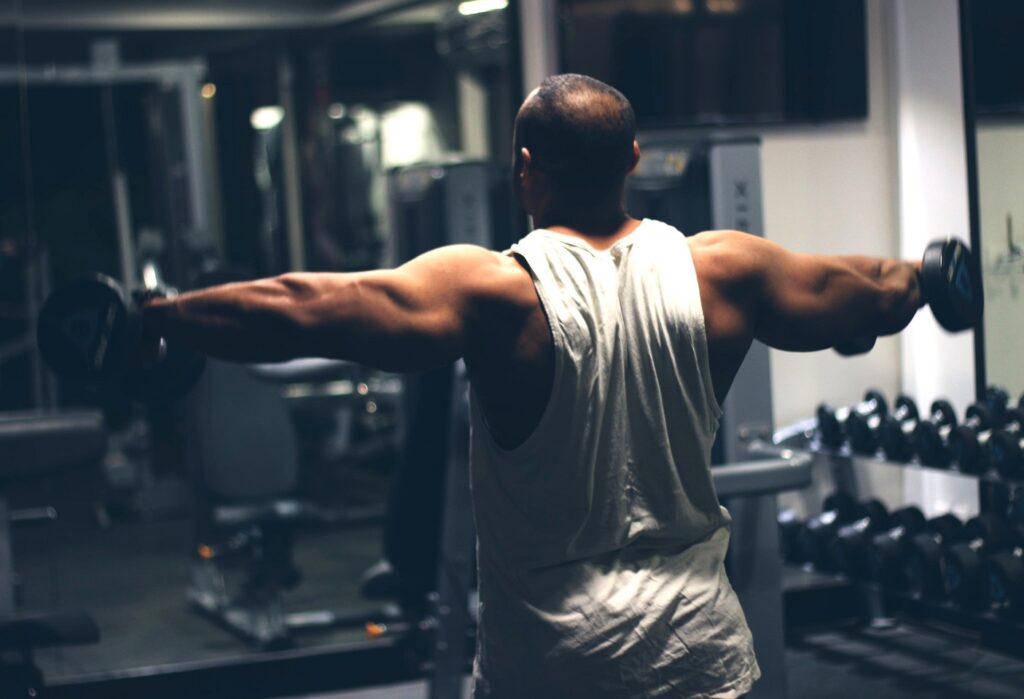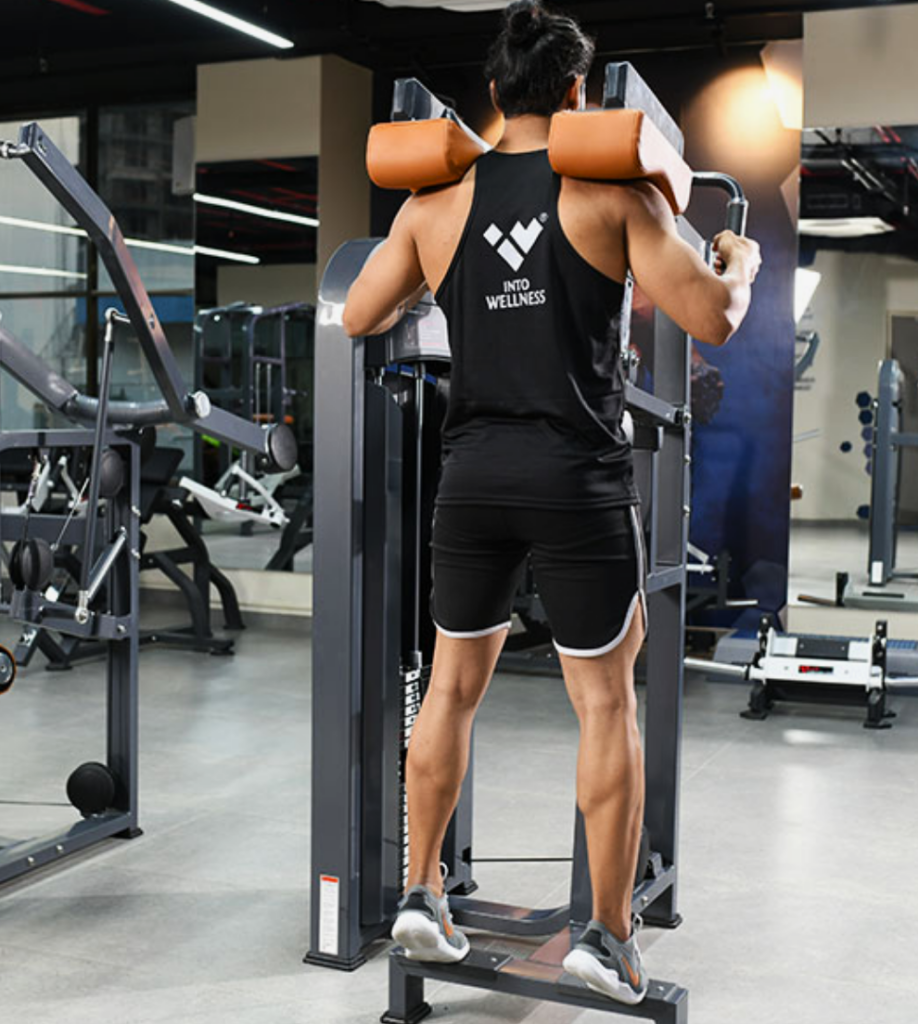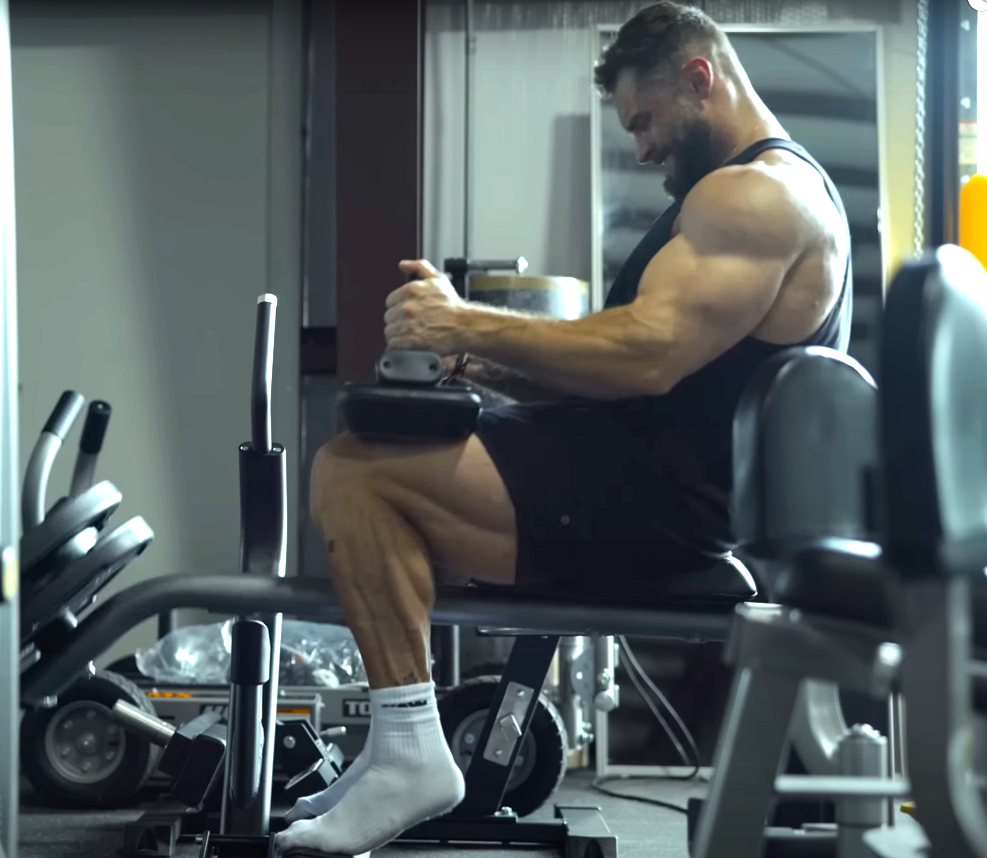Classic Physique Mr. Olympia Chris Bumstead training calves. / YouTube
What’s the hardest muscle to grow? Of course, it varies by individual. Some people struggle for years to eke out the slightest gain in one body part, say upper back, while others have hang glider lats but barely train them. We wanted to know what on average are the hardest body parts to grow. So, we asked the A.I. platform ChatGPT, and it ranked the top six muscles. We also asked it to do a deep dive on number one. All of the following text with a green background was composed by A.I. Let’s explore the hardest muscles to grow, and what you can do to grow them.
WHAT’S THE HARDEST MUSCLE TO GROW?
The difficulty of growing muscles can vary from person to person based on genetics, training methods, and other factors. However, some muscles are commonly considered more challenging to develop for many individuals. Here are a few muscle groups that are often cited as challenging to grow:
1. CALVES
The calf muscles (gastrocnemius and soleus) can be challenging for some people due to genetic factors, fiber composition, and daily use.
We and A.I. both have much to say about stubborn calves in the “Hardest Muscle To Grow: Calves” section below.
2. FOREARMS
Developing the muscles in the forearms, such as the brachioradialis and wrist flexors, can be challenging. They are often involved in grip strength exercises, but direct forearm training is sometimes neglected.

Too many people neglect forearms entirely, thinking they’ll grow by gripping weights when training upper arms and other body parts. If you have great genetics, they will. If you don’t, they won’t. Forearms, like calves, get a lot of low intensity, short range-of-motion work throughout the day. Therefore, make certain to train them through full ranges of motion. You may also want to up the intensity with techniques like supersets and drop sets.
See also: Best Forearm Workouts
3. HAMSTRINGS
While the quadriceps (front thigh muscles) tend to be more responsive to training, the hamstrings (back thigh muscles) can be challenging to develop, especially the biceps femoris.
If hamstrings are a weak body part, consider prioritizing them by training them first in your leg routine or work them separately from quads on a different day. Because of superior muscle activation, we also recommend seated leg curls over lying leg curls.
See also: Best Hamstring Workouts
4. UPPER CHEST
The upper chest, particularly the clavicular portion of the pectoralis major, is often considered more difficult to target than the lower chest. Incline presses and other incline exercises can help emphasize the upper chest.
We recommend doing incline presses and flyes first in your chest routine to prioritize this area. If your upper chest is really lagging, do mostly or only incline exercises for pecs.
See also: Science Says: Best Chest Exercises
5. DELTOIDS
Some individuals may find it challenging to develop the lateral (side) and rear delts compared to the anterior (front) delts. Balanced shoulder training, including lateral raises and rear delt exercises, can address this.

Because the anterior delts get extra work with chest presses, the other two heads may lag. You may want to do side raises first in your shoulder routine to prioritize and pre-exhaust your medial delts. Additionally, consider training posterior delts with back to focus on this area in a pull workout and leave front and side delts for your shoulder routine.
For much more on medial delts, see: How to Get Wider Shoulders
6. TRICEPS LONG HEAD
The triceps brachii has three heads (lateral, medial, and long). The long head of the triceps, in particular, can be more challenging to target and stimulate compared to the other heads.
The lateral and medial triceps heads attach at the top to the humerus (upper arm) bone, while the long head attaches at the top to the scapula (shoulder blade). Because of this different attachment, the long head works slightly differently than the other two heads; and it assists in pulling your arm down and backwards, as during a straight-arm pulldown. To best target the long head, do overhead triceps extensions and kickbacks. For a long-head-centric triceps routine, include at least one overhead extension exercise, whether with an EZ-bar, dumbbell(s), cable, or machine, and do it first in your routine.
For much more on how to best work the three triceps heads, see: Science Says: Best Triceps Exercises
It’s important to note that individual responses to training can vary, and what may be challenging for one person may not be the same for another. Additionally, a well-rounded and balanced training program, proper nutrition, and adequate recovery are crucial for overall muscle development. If you’re facing challenges with a specific muscle group, consider seeking guidance from a fitness professional or a healthcare provider for personalized advice.
HARDEST MUSCLE TO GROW: CALVES
The difficulty of growing a particular muscle can vary from person to person based on genetics, training methods, and other factors. However, some muscles are commonly considered more challenging to develop for many individuals. One such muscle group is often the calves.
The calf muscles, specifically the gastrocnemius and soleus, can be challenging for some people to grow due to a few reasons:
1. GENETICS
Genetics play a significant role in muscle development, and some individuals may have genetic predispositions that make it harder for their calves to grow.
One of the most important genetic factors is the length of the gastrocnemius and soleus muscles in relation to their tendons. Those with high attachments, short muscles, and long tendons will have a much harder time growing their calf muscles than those with low attachments, long muscles, and short tendons.
2. FIBER COMPOSITION
Muscles have different fiber types, such as fast-twitch and slow-twitch fibers. The calves may be more resistant to hypertrophy (muscle growth) due to their predominantly slow-twitch fiber composition.
Slow-twitch are your endurance fibers. The gastrocnemius is about 50% slow-twitch, and the soleus is about 80% slow-twitch. However, there’s a lot of variability in the numbers. One study found the soleus slow-twitch percentage ranged from 64-100% and the gastrocnemius from 34-82%. So, it’s probable those who grow easily from calf raises have more fast-twitch while those who work twice as hard for little calf growth possess almost entirely slow-twitch. And this is determined by your DNA and cannot be changed. Some people are sprinters (more fast-twitch), some are marathoners (more slow-twitch).

3. DAILY USE
The calves are used for walking and other daily activities, which means they may be accustomed to a high level of regular activity. This can make it more challenging to stimulate them with traditional resistance training.
We wrote a whole article on growing stubborn calves. It’s here. But we’ll mention a favorite strategy: Go very slow through a maximum range of motion. Your calves are used to a lot of fast, short reps (walking), so don’t do more of that same old same old on calf machines. Instead, whatever calf exercise you do, get a maximum stretch and hold for five seconds, then raise up as high as you can and hold for five seconds. That’s one rep. Do 10-12 such reps, and hold the final contraction of each set as long as you can.
To target the calves effectively, it’s important to include a variety of exercises that focus on both the gastrocnemius and soleus muscles. This can include standing and seated calf raises, toe raises, and other calf-specific exercises.
For why you should do mostly straight-leg calf exercises and perhaps skip seated calf raises, see: Best Calf Exercises: New Research
HARDEST MUSCLE TO GROW: TRAINING STRATEGY
Finally, let’s go over a few training principles that apply to any slow-growing area, whether one of the above or one not mentioned here.
PRIORITIZE
This is our most important, slow-grower training tip. Whatever body part, muscle, or part of a muscle is lagging, work it first in your routine when your strength, energy, and enthusiasm are greatest. In some cases, you may want to give it its own workout or work it more frequently than other parts. For example, if your medial delts are lagging, do side laterals first in your shoulder routine, but also do them in another workout at least 48 hours later.
For more on this, see: Priority Training Principle: How to Eliminate Weaknesses
HIT THE TARGET
Some weaknesses develop over time because you’re consistently under-training that area by missing the target. From the triceps long head (see above) to the outer quads to the lower abs to whatever else, make certain you know the best exercises to work each specific area. The Barbell can be your guide for this.
WORK HARDER
For the stubborn area, either increase the volume or intensity or both. Consider working a particularly stubborn area more frequently than the areas that grow easiest. Proportional development should always be your goal.
EXPERIMENT
If what’s you’ve been doing isn’t working to grow a stubborn body part, muscle, or area of a muscle, then stop doing that same thing. Experiment with workout frequency, exercises, rep schemes, intensity techniques and other factors to find our what works best with your body to grow your slowest growers faster.
















































